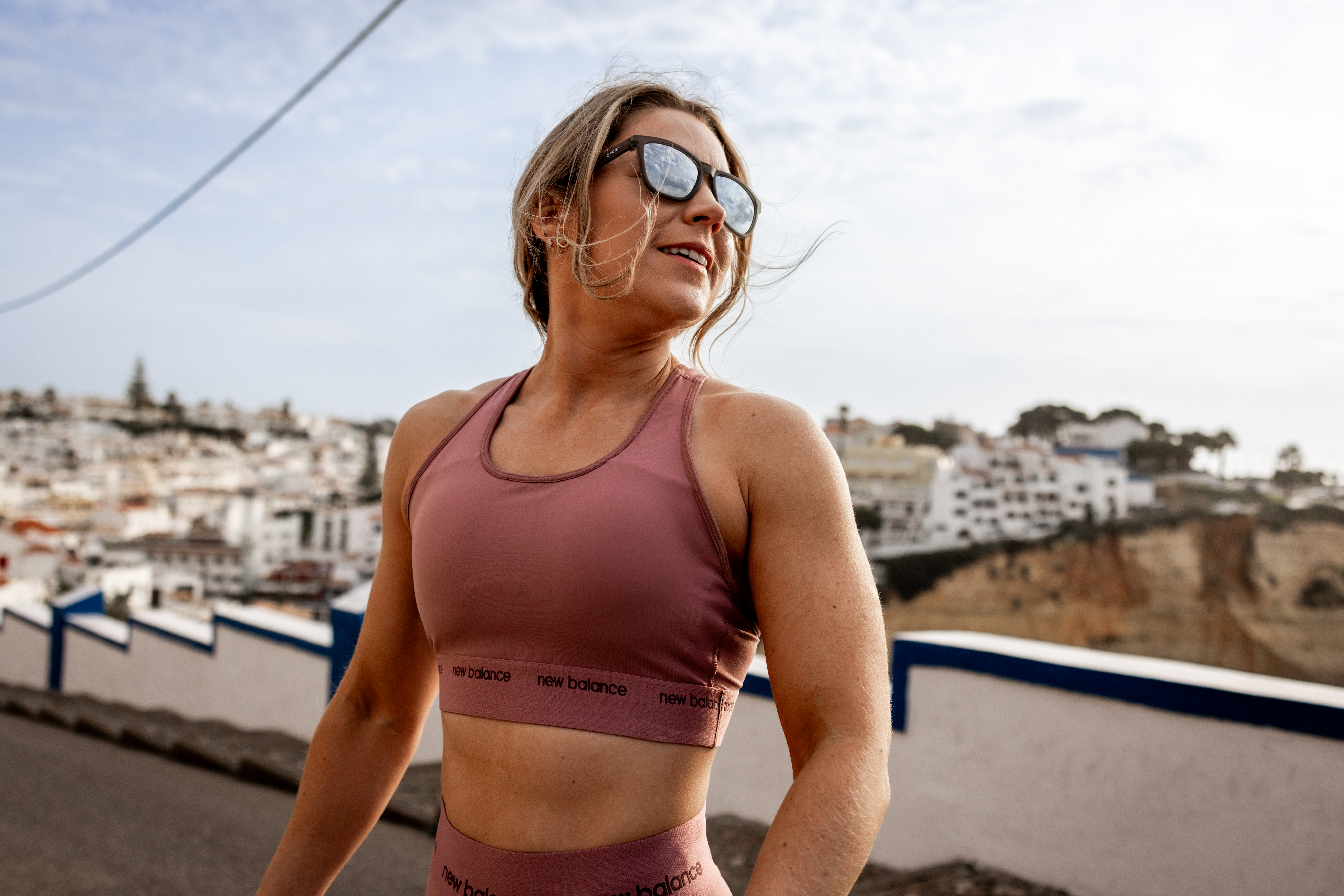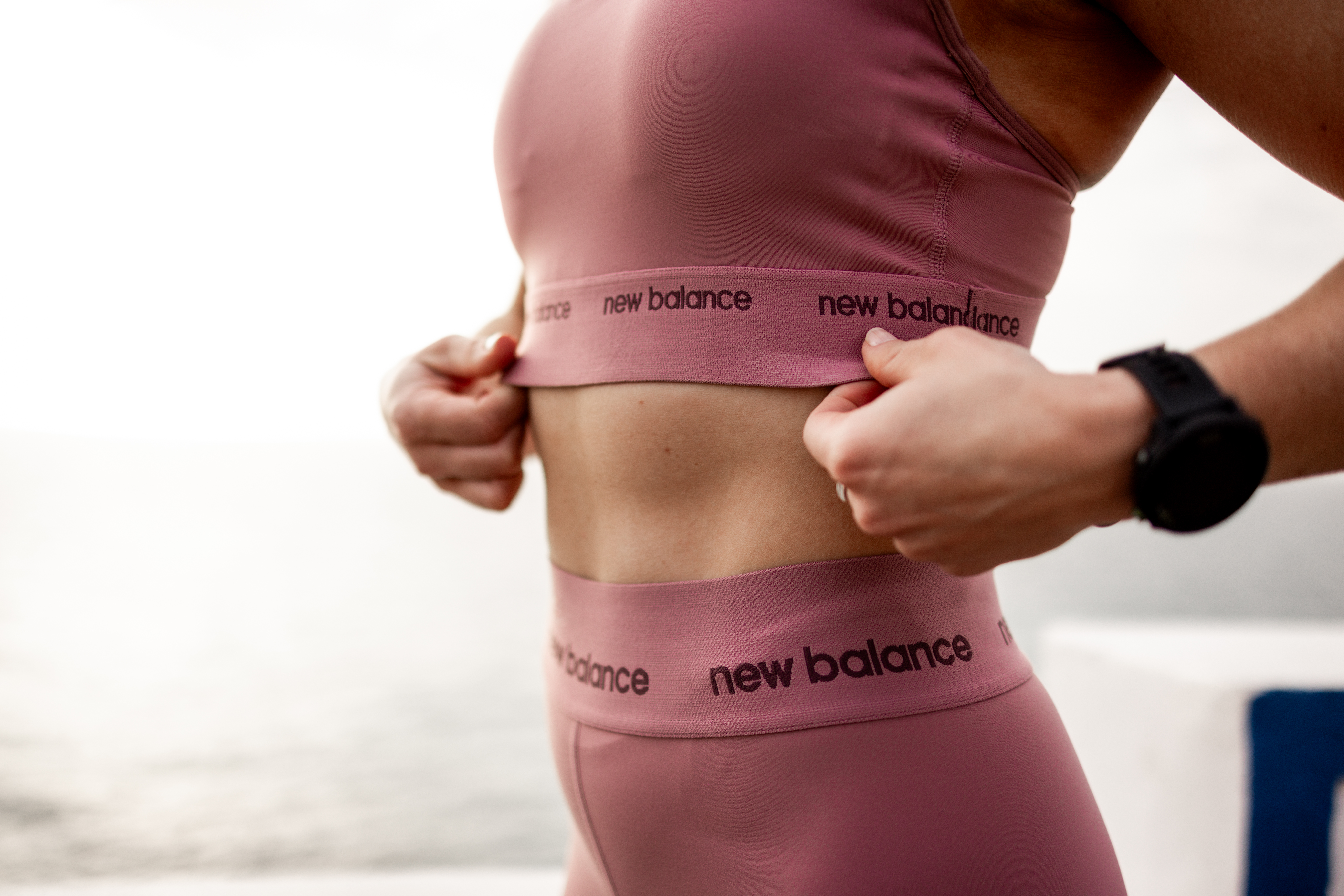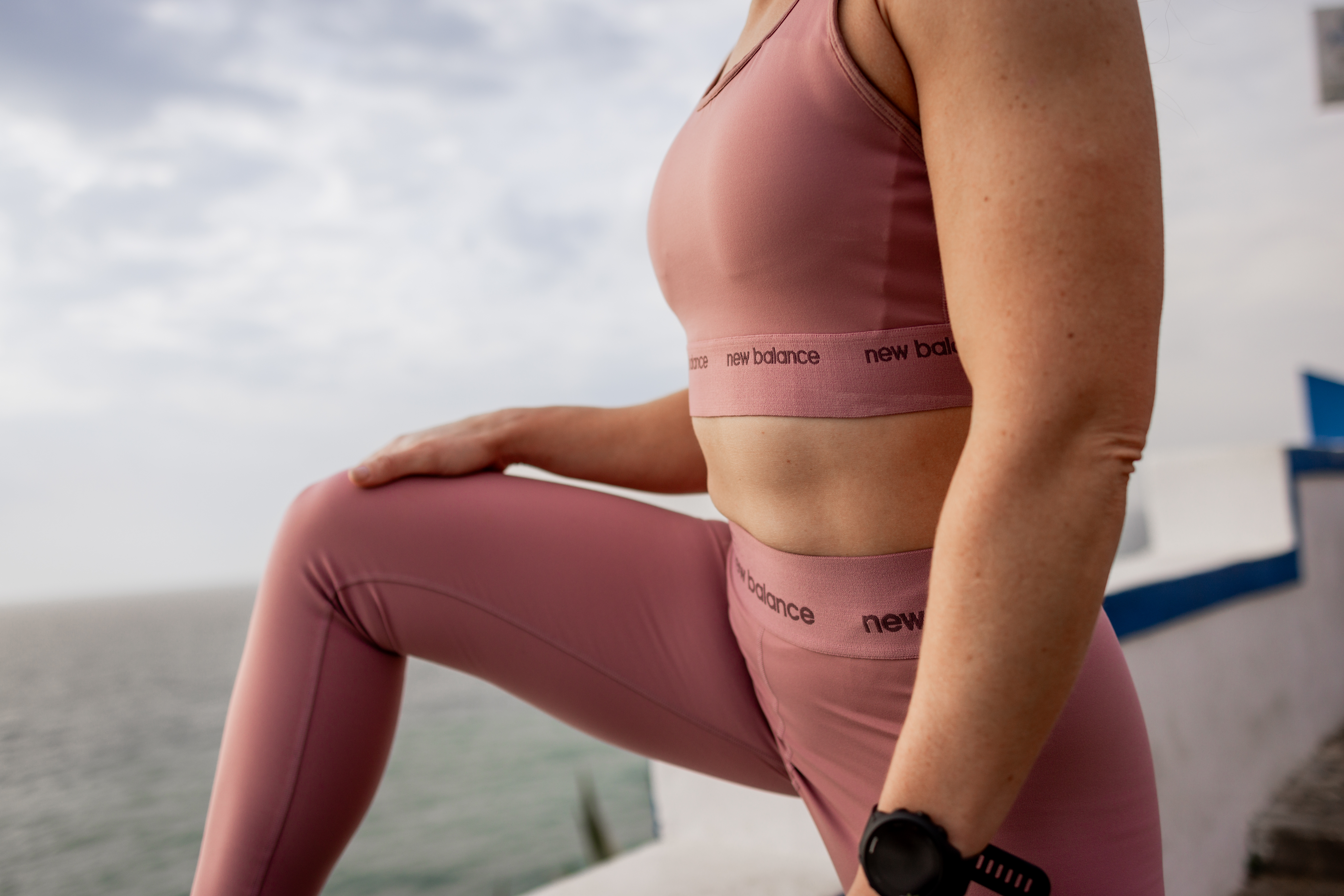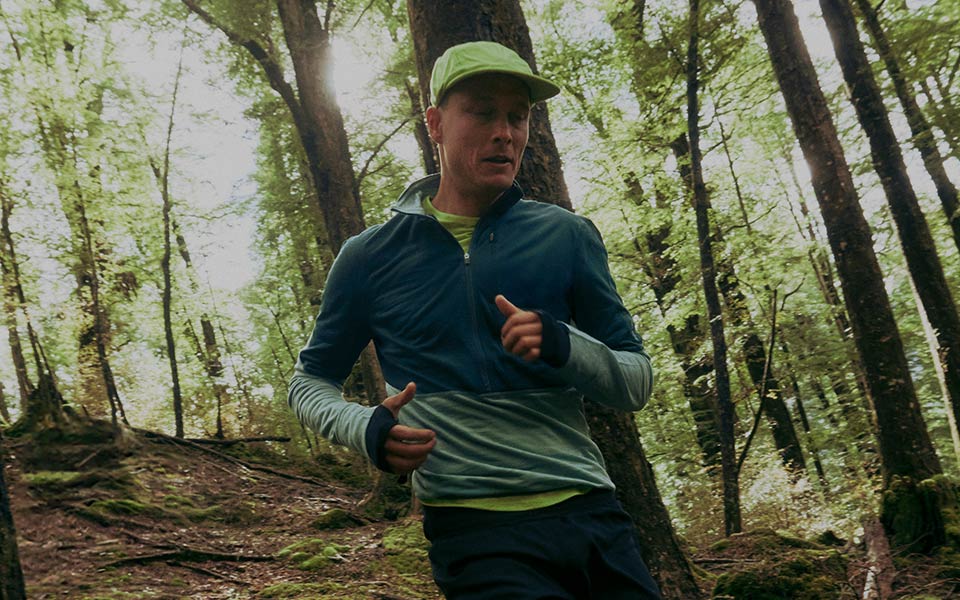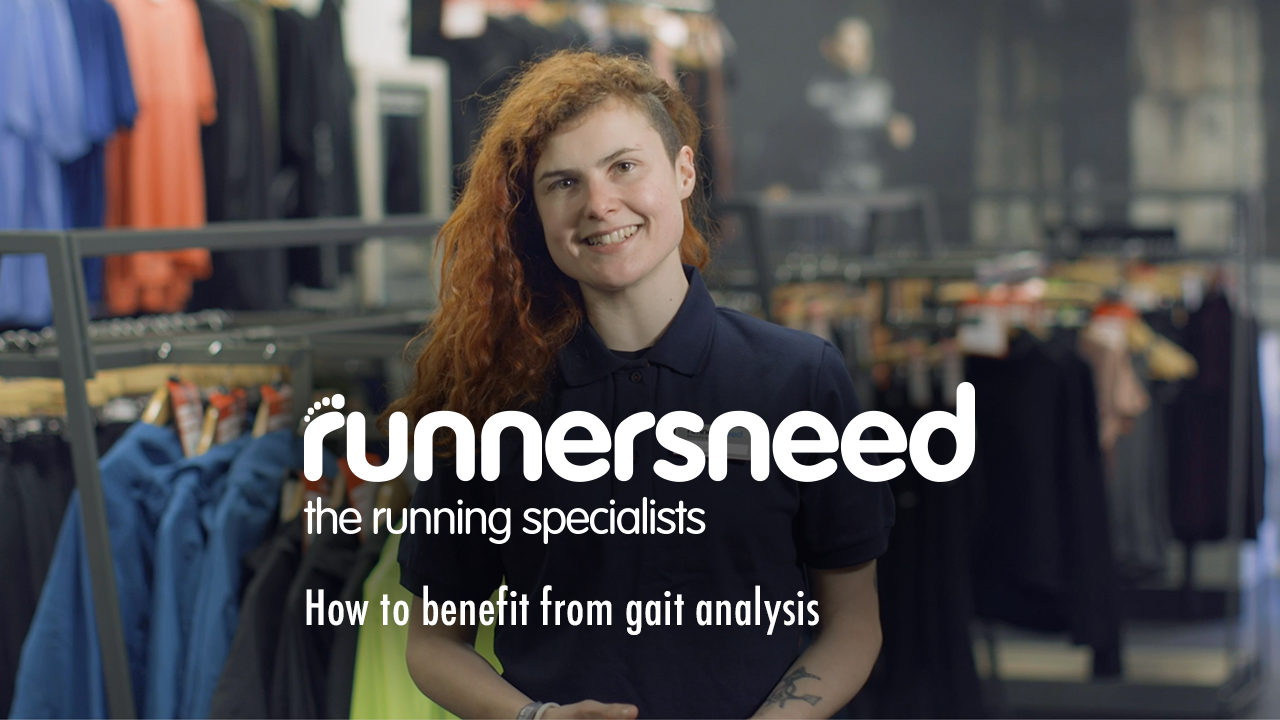Finding your perfect sports bra is a game changer for your fitness routine. 80% of women wear the wrong bra size, but it doesn’t have to be this way. Take the time to measure yourself, try different styles, and don’t settle for anything less than comfort and support. Remember, the right sports bra can boost your confidence, protect your body, and help you get the most out of every workout. Here’s what you need to know to pick the best sports bra for you...
Why Is It Important To Have A Good Sports Bra For Running?
The unique motion of running causes your breasts to move in a figure of eight motion, sometimes up and down as much as eight inches. This puts your Cooper’s ligaments - the thin collections of connective tissues that help support your breasts - under huge strain. Without the correct support, you’re likely to experience soreness, which could cause you lasting damage.
Sports scientists from the University of Portsmouth studied how breast tissue is damaged when running in regular and sports bras. They found low to medium-impact sports bras reduce bounce but aren't as effective in restricting side-to-side movement when running.
Their research also showed that women change how they run depending on the type of bra worn. So not only will a good sports bra provide you with vital support, but it might just help you set a new PB too!
What Are the Different Types of Sports Bras?
Sports bras come in a variety of styles and support levels, each designed for different activities and body shapes.
| Type | Best For | Key Features | Why Choose This Style? |
|---|---|---|---|
| Compression | Small to medium busts; low to medium-impact activities |
Pullover/racerback, wire-free, lightweight, smooth silhouette |
Simple, affordable, comfortable; ideal for yoga, walking, or Pilates |
| Encapsulation | Medium to large busts; medium to high-impact activities |
Separate cups, adjustable straps/closures, often underwired, defined structure |
Maximum support and shape; great for running, HIIT, or aerobics |
| Hybrid/Combination | All bust sizes; high-impact activities | Combines compression & encapsulation, adjustable, high support |
Best for high-intensity workouts; versatile for various activities |
Understanding Support Levels: Low, Medium, and High Impact
Selecting the right support level is crucial for both comfort and performance. The level you need depends on your cup size and the type of exercise you do
Low-Impact Sports Bras
Best for → Yoga, Pilates, walking, stretching
Features → Light compression, soft cups, comfortable straps, lightweight fabrics
Why choose it → Offers gentle support and freedom of movement for activities with minimal bounce
Medium-Impact Sports Bras
Best for → Cycling, hiking, strength training, dancing
Features → Moderate compression, wider straps, breathable materials
Why choose it → Balances support and comfort for moderate movement activities
High-Impact Sports Bras
Best for → Running, aerobics, HIIT, mountain biking
Features → Strong compression, encapsulation, adjustable straps, wider bands, moisture-wicking fabrics
Why choose it → Minimises movement and bounce, essential for high-impact exercise and larger busts
Sports Bra Fitting Guide
Sports Bra Sizing: Cup, Band, and Brand Variations
Sports bras come in various sizing systems: traditional cup and band sizes (like 34B, 36D) or general sizes (XS–XL). Cup and band sizing allows you to tailor the fit more precisely, especially if your cup and chest size don’t increase proportionally. If you have an unusual breast shape or size, look for bras with more stretch or adjustable features for a custom fit
Getting the right fit starts with accurate measurements. Here’s a step-by-step guide to measuring yourself at home for the perfect sports bra fit:
1. Measure Your Rib Cage (Band Size)
- Wrap a soft tape measure snugly around your rib cage, just beneath your breasts.
- The tape should be firm but not tight—you should be able to fit two fingers underneath.
- Round down to the nearest full inch.
| Rib Cage Measurement | Band Size |
|---|---|
| 25" - 27" | 30 |
| 27" - 29" | 32 |
| 29" - 31" | 34 |
| 31" - 33" | 36 |
| Rib Cage Measurement | Band Size |
|---|---|
| 33" - 35" | 38 |
| 35" - 37" | 40 |
| 37" - 39" | 42 |
| 39" - 41" | 44 |
2. Measure Your Bust (Cup Size)
- Measure around the fullest part of your bust, keeping the tape snug but not restrictive.
- Subtract your band size from this measurement. The difference determines your cup size (1" = A, 2" = B, 3" = C, etc).
3. Try On and Adjust for Fit
Remember, sizing can vary between brands and styles. Always check the brand’s size guide and try on multiple sizes if possible. The best sports bra is the one that fits your unique body, not just the number on the label.
How to Choose the Right Sports Bra for Your Activity
Matching your sports bra to your activity is essential for comfort and support. Here’s a quick guide:
| Activity | Recommended Support Level | Best Bra Type |
|---|---|---|
| Yoga/Pilates | Low | Compression |
| Walking/Hiking | Low to Medium | Compression/Encapsulation |
| Cycling | Medium | Encapsulation |
| Gym/Weights | Medium | Encapsulation/Combination |
| Running/HIIT | High | Combination |
How Long Do Sports Bras Last?
A sports bra will last around 30 - 40 washes, but the technical fabric will loosen with each cycle, making it less effective.
To give your bra a longer lifespan wash in cold water, avoid fabric softener and bleach, and do not tumble dry as heat will accelerate the elastic degradation. Instead, dry it flat and if your sports bra starts to rub or chafe invest in a new one.
Discover Support and Comfort You Can Trust
FAQs
Sports bras should be replaced every 6-12 months, depending on frequency of use and washing. Signs you need a new one include loss of elasticity, stretched straps, or decreased support.
No. Sports bras are designed to fit snugly. Stick to your regular bra size, but always check the brand’s sizing guide.
Sports bras are engineered to reduce movement and provide support during activity, using compression, encapsulation, or both. Regular bras are designed for everyday comfort and shaping.
High-impact sports bras with encapsulation and wide, adjustable straps are best for running, especially for larger busts.
A compression sports bra is designed to press the breasts firmly against the chest wall, minimising movement during exercise. These bras usually come in pullover styles without individual cups and are most suitable for small to medium bust sizes and low to medium-impact activities like yoga, walking, or Pilates. Compression bras are popular for their simplicity, comfort, and streamlined look.
An encapsulation sports bra features separate cups that support each breast individually, similar to a traditional everyday bra. This design offers enhanced shape, definition, and support, making it ideal for medium to large bust sizes and medium to high-impact activities such as running, HIIT, or aerobics. Encapsulation bras often include adjustable straps and back closures.
A hybrid or combination sports bra merges the benefits of both compression and encapsulation. It compresses the breasts against the chest while also supporting each breast individually with separate cups. This dual-action design delivers maximum support and is especially recommended for high-impact activities and for those with larger busts. Hybrid bras are versatile and suitable for a wide range of sports and fitness routines.
For high-impact activities such as running, aerobics, or HIIT, a hybrid or combination sports bra is generally the best choice. These bras combine compression and encapsulation to maximise support and minimise bounce, making them ideal for all bust sizes, especially for those with larger chests.
Related Articles

